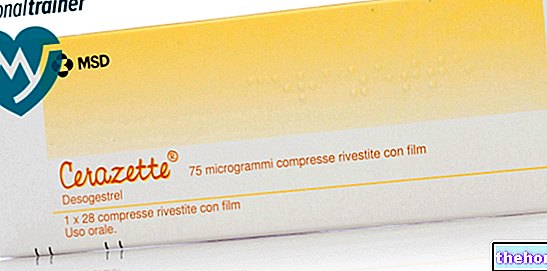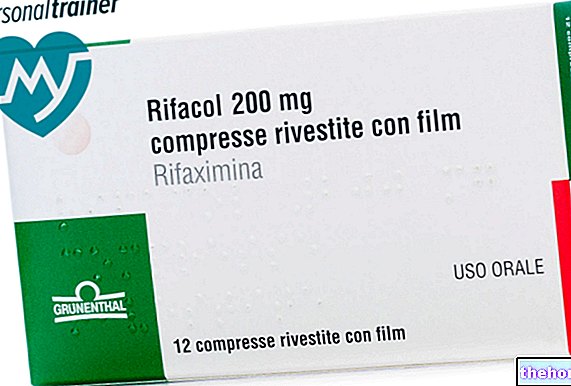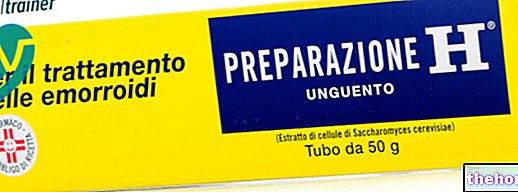Active ingredients: Domperidone
DOMPERIDONE ABC 10 mg tablets
Why is Domperidone ABC used? What is it for?
PHARMACOTHERAPEUTIC CATEGORY
Prokinetics
THERAPEUTIC INDICATIONS
Adults
Relief of symptoms such as nausea, vomiting, epigastric fullness, upper abdominal discomfort, regurgitation of gastric contents.
Contraindications When Domperidone ABC should not be used
DOMPERIDONE ABC is contraindicated in case of:
- Known hypersensitivity to the active substance or to any of the excipients.
- Prolactin-releasing pituitary tumors (prolactinomas).
DOMPERIDONE ABC must not be used in cases where a stimulation of gastric motility could be harmful: gastrointestinal bleeding, mechanical obstruction or perforation.
Precautions for use What you need to know before taking Domperidone ABC
Use in patients with hepatic insufficiency
Since domperidone is predominantly metabolised in the liver, DOMPERIDONE ABC should not be used in patients with hepatic insufficiency.
Kidney failure
Since only a very small amount of unchanged drug is excreted via the kidney, the dose of a single administration is unlikely to need correction in patients with renal insufficiency. However, in case of repeated administration, the dosing frequency should be reduced to 1 or 2 daily intakes depending on the severity of the renal insufficiency and the dose may need to be reduced. Such patients on prolonged therapy should be regularly reviewed.
Administration with other medicinal products
Do not take DOMPERIDONE ABC if you are taking oral ketoconazole (a medicine to treat fungal infections) or oral erythromycin (an antibiotic). It is important to ask your doctor or pharmacist for information if you are taking any other medicines, including those not subject to a prescription.
Interactions Which drugs or foods can modify the effect of Domperidone ABC
Tell your doctor or pharmacist if you have recently taken any other medicines, even those without a prescription.
Domperidone is predominantly metabolised via the CYP3A4 enzyme system. Data from in vitro studies suggest that concomitant use of drugs that significantly inhibit this enzyme may result in increased plasma levels of domperidone. In vivo interaction studies with ketoconazole have shown marked inhibition by ketoconazole of the first pass metabolism of the CYP3A4-mediated domperidone The results of this interaction study should be taken into account when domperidone is prescribed concomitantly with strong CYP3A4 inhibitors such as: ketoconazole, ritonavir and erythromycin.
Warnings It is important to know that:
Pregnancy and breastfeeding
DOMPERIDONE ABC should only be used in pregnancy if justified by the expected therapeutic benefits. The total amount of domperidone excreted in human breast milk is presumably less than 7 micrograms per day at the highest recommended dosage regimen. It is not known whether this is dangerous for the newborn. Consequently DOMPERIDONE ABC is not recommended for mothers who are breastfeeding.
Ask your doctor or pharmacist for advice before taking any medicine.
Effects on ability to drive and use machines
DOMPERIDONE ABC has no or negligible influence on the ability to drive or use machines.
Important information about some of the ingredients
The tablets contain lactose so if your doctor has told you that you have an intolerance to some sugars, contact your doctor before taking this medicine.
See section Undesirable effects
Dosage and method of use How to use Domperidone ABC: Dosage
It is recommended to take DOMPERIDONE ABC orally before meals. In case of intake after meals, the absorption of the drug is rather slowed.
Adults and adolescents (over 12 years of age and weighing 35 kg or more)
The initial duration of treatment is 4 weeks. After 4 weeks, patients should be reviewed and the need for continued treatment reassessed.
1 - 2 tablets of 10 mg 3 to 4 times a day with a maximum daily dose of 80 mg.
The tablets are not suitable for use in children weighing less than 35 kg.
Overdose What to do if you have taken too much Domperidone ABC
In case of accidental ingestion / intake of an overdose of Domperidone ABC, notify your doctor immediately or go to the nearest hospital.
Symptoms
Symptoms of overdose may include somnolence, agitation, convulsion, altered consciousness, disorientation and extrapyramidal manifestations, especially in children.
Treatment
There is no specific antidote to domperidone but gastric lavage and the use of activated charcoal may be helpful in the event of an overdose. Close medical surveillance and supportive therapy are recommended.
Anticholinergic and antiparkinsonian drugs may be useful in controlling extrapyramidal reactions.
If you have any questions about the use of Domperidone ABC, ask your doctor or pharmacist.
Side Effects What are the side effects of Domperidone ABC
Like all medicines, Domperidone ABC can cause side effects, although not everybody gets them.
Disorders of the immune system and skin / subcutaneous tissue: very rare; anaphylactic shock, allergic reactions, including skin rash, itching, hives, choking, swelling of the throat. If this happens, stop treatment immediately and contact a doctor.
Disorders of the endocrine system: rare; increased prolactin levels.
Psychiatric disorders: very rare; agitation, nervousness
Disorders of the nervous system: very rare; abnormal muscle movements or tremor, seizures, sleepiness, headache. The risk of abnormal muscle movements is greater in infants and young children than in adults. If this happens, stop treatment immediately and contact a doctor.
Cardiovascular disorders: very rare; heart rate disorders (QT interval prolongation and ventricular arrhythmias). If this happens, stop treatment immediately and contact a doctor.
Gastrointestinal disorders: rare; gastrointestinal disorders including very rare transient intestinal cramps, diarrhea.
Disorders of the reproductive system and breast: rare; galactorrhea, gynecomastia, amenorrhea.
Diagnostic tests: very rare; abnormal tests for liver function.
Domperidone may be associated with an increased risk of heart rhythm disturbances and cardiac arrest. This risk may be more likely in patients over the age of 60 or taking doses greater than 30 mg per day.
Domperidone should be used at the lowest effective dose in adults and adolescents. Domperidone can cause an increase in prolactin levels. In rare cases, this hyperprolactinaemia can cause neuro-endocrine side effects such as galactorrhea, gynaecomastia and amenorrhea. Extrapyramidal side effects are very rare in infants and young children and exceptional in adults. These effects disappear spontaneously and completely with discontinuation of treatment.
Other central nervous system related undesirable effects such as seizures, agitation and sleepiness are also very rare and reported mainly in infants and children.
Compliance with the instructions contained in the package leaflet reduces the risk of undesirable effects. If any of the side effects gets serious, or if you notice any side effects not listed in this leaflet, please inform your doctor or pharmacist.
Expiry and Retention
Expiry: see the expiry date printed on the package
The expiry date indicated refers to the product in intact packaging, correctly stored.
Warning: do not use the medicine after the expiry date shown on the package.
do not store above 25 ° C.
Medicines should not be disposed of via wastewater or household waste. Ask your pharmacist how to throw away medicines you no longer use. This will help protect the environment.
Keep this medicine out of the sight and reach of children
Composition and pharmaceutical form
COMPOSITION
DOMPERIDONE ABC 10 mg tablets
One tablet contains:
Active ingredient: domperidone 10 mg.
Excipients: lactose, corn starch, povidone, sodium lauryl sulfate, microcrystalline cellulose, colloidal silicon dioxide, sodium caramelose, hydrogenated vegetable oil, magnesium stearate.
PHARMACEUTICAL FORM AND CONTENT
DOMPERIDONE ABC 10 mg tablets - 30 tablets
Source Package Leaflet: AIFA (Italian Medicines Agency). Content published in January 2016. The information present may not be up-to-date.
To have access to the most up-to-date version, it is advisable to access the AIFA (Italian Medicines Agency) website. Disclaimer and useful information.
01.0 NAME OF THE MEDICINAL PRODUCT
DOMPERIDONE ABC 10 MG TABLETS
▼ Medicinal product subject to additional monitoring. This will allow the rapid identification of new safety information. Healthcare professionals are asked to report any suspected adverse reactions. See section 4.8 for information on how to report adverse reactions.
02.0 QUALITATIVE AND QUANTITATIVE COMPOSITION
One tablet contains
Active ingredient: domperidone 10 mg.
Excipients: lactose
For the full list of excipients, see section 6.1.
03.0 PHARMACEUTICAL FORM
Tablets
04.0 CLINICAL INFORMATION
04.1 Therapeutic indications
Adults
• Domperidone ABC is indicated to relieve the symptoms of nausea and vomiting,
04.2 Posology and method of administration
It is recommended to take DOMPERIDONE ABC orally before meals. In case of intake after meals, the absorption of the drug is rather slowed.
Domperidone ABC should be used at the lowest effective dose for the shortest duration necessary to control nausea and vomiting.
Patients should try to take each dose at the appointed time. If a dose is missed, it should be missed and the usual dosing schedule resumed. A double dose should not be taken to make up for a forgotten dose.
As a rule, the maximum treatment duration should not exceed one week.
Adults and adolescents (12 years of age or older and weighing 35 kg or more)
1 tablets of 10 mg up to 3 times a day for a maximum dose of 30 mg per day
Due to the need for dosing accuracy, the tablets are not suitable for use in children and adolescents weighing less than 35 kg.
See section 4.4 Special warnings and precautions for use.
Hepatic impairment
Domperidone ABC is contraindicated in moderate or severe hepatic impairment (see section 4.3). However, no dosage adjustment is required in case of mild hepatic impairment (see section 5.2).
Renal impairment
As the elimination half-life of domperidone is prolonged in the presence of severe renal impairment, the dosing frequency of Domperidone ABC should be reduced to once or twice daily depending on the severity of the impairment in case of repeated administration and may be necessary. reduce the dosage.
04.3 Contraindications
DOMPERIDONE ABC is contraindicated in the following situations
• Known hypersensitivity to the active substance or to any of the excipients.
• Prolactin-releasing pituitary tumors (prolactinomas).
• In patients with moderate or severe hepatic impairment (see section 5.2)
• In patients with known prolongation of cardiac conduction intervals, particularly the QTc interval, in patients with significant electrolyte disturbances and pre-existing heart disease, eg congestive heart failure (see section 4.4)
• Concomitant administration of all drugs that prolong the QT interval (see section 4.5).
• Concomitant administration of potent CYP3A4 inhibitors (regardless of their respective QT interval prolongation effects) see section 4.5)
DOMPERIDONE ABC must not be used in cases where a stimulation of gastric motility could be harmful: gastrointestinal bleeding, mechanical obstruction or perforation.
04.4 Special warnings and appropriate precautions for use
Precautions for use
The tablets contain lactose therefore patients with rare hereditary problems of galactose intolerance, the Lapp lactase deficiency, or glucose-galactose malabsorption should not take this medicine.
Use while breastfeeding
The total amount of domperidone excreted in human breast milk is presumably less than 7 mcg per day at the highest recommended dosage regimen. It is not known whether this is harmful to the newborn. Therefore, the intake of DOMPERIDONE ABC is not recommended for mothers who are breastfeeding.
Use in patients with hepatic insufficiency
Since domperidone is predominantly metabolised in the liver, DOMPERIDONE ABC should not be used in patients with hepatic insufficiency.
Renal impairment
The elimination half-life of domperidone is prolonged in severe renal insufficiency. In case of repeated administration, the dosing frequency of domperidone should be reduced to once or twice daily depending on the severity of the impairment. the dosage.
Such patients on prolonged therapy should be followed up regularly.
Administration with potent CYP3A4 inhibitors
Co-administration with oral ketoconazole, erythromycin or other potent CYP3A4 inhibitors that prolong the QTc interval should be avoided (see section 4.5 "Interactions with other medicinal products and other forms of interaction").
Cardiovascular effects
Domperidone has been associated with prolongation of the QT interval on the electrocardiogram. Very rare cases of QTe interval prolongation have been reported during post-marketing surveillance twists of the point in patients taking domperidone. Such cases included patients with confounding risk factors, electrolyte disturbances and concomitant treatment that may have been contributing factors (see section 4.8).
Epidemiological studies have shown that domperidone was associated with an increased risk of severe ventricular arrhythmias or sudden cardiac death (see section 4.8). An increased risk has been observed in patients over 60 years of age, in patients taking daily doses greater than 30 mg and in patients taking concomitant QT-prolonging drugs or CYP3A4 inhibitors.
Domperidone should be used at the lowest effective dose in adults and children.
Domperidone is contraindicated in patients with known existing prolongation of cardiac conduction intervals, particularly the QTc interval, in patients with significant electrolyte disturbances (hypocalcaemia, hypercalcaemia, hypomagnesaemia), or bradycardia, or in patients with pre-existing heart disease such as heart failure. congestive due to the increased risk of ventricular arrhythmia (see section 4.3) Electrolyte disturbances (hypocalcaemia, hypercalcaemia, hypomagnesaemia) or bradycardia are known to be conditions that increase proarrhythmic risk.
Domperidone treatment should be discontinued in the presence of signs or symptoms associated with cardiac arrhythmia and patients should consult their physician.
Patients should be advised to promptly report any cardiac symptoms.
04.5 Interactions with other medicinal products and other forms of interaction
Increased risk of QT interval prolongation occurring due to pharmacodynamic and / or pharmacokinetic interactions.
Concomitant intake of the following substances is contraindicated
Medicines that prolong the QTc interval
• class IA anti-arrhythmics (eg disopyramide, hydroquinidine, quinidine)
• class III anti-arrhythmics (eg amiodarone, dofetilide, dronedarone, ibutilide, sotalol)
• some antipsychotics (eg haloperidol, pimozide, sertindole)
• some antidepressants (eg citalopram, escitalopram)
• some antibiotics (for example erythromycin, levofloxacin, moxifloxacin, spiramycin)
• some antifungal agents (for example pentamidine)
• some antimalarial agents (in particular halofantrine, lumefantrine)
• some gastrointestinal medications (eg cisapride, dolasetron, prucalopride)
• some antihistamines (eg mechitazine, mizolastine)
• some drugs used in the treatment of cancers (for example toremifene, vandetanib, vincamine)
• some other drugs (eg bepridil, diphemanil, methadone)
(see section 4.3).
Potent CYP3A4 inhibitors (regardless of related QT prolongation effects), eg:
• protease inhibitors
• systemic azole antifungals
• some macrolides (erythromycin, clarithromycin and telithromycin)
(see section 4.3).
Concomitant use of the following substances is not recommended
Moderate inhibitors of CYP3A4, eg diltiazem, verapamil and some macrolides.
(see section 4.3)
The concomitant intake of the following substances requires caution in use
Caution should be exercised in the case of drugs that induce bradycardia and hypocalcaemia, as well as with the following macrolides involved in the prolongation of the QT interval: azithromycin and roxithromycin (clarithromycin is contraindicated as it is a potent inhibitor of CYP3A4).
The above list of substances is indicative and not exhaustive.
04.6 Pregnancy and lactation
There are few post-marketing data on the use of domperidone in pregnant women. A study in rats showed reproductive toxicity at a high dose, toxic to the mother. The potential risk for humans is unknown. Therefore, DOMPERIDONE ABC should only be used in pregnancy if justified by the expected therapeutic benefit.
Breastfeeding
Domperidone is excreted in human milk and breastfed infants receive less than 0.1% of the dose adjusted for maternal weight. The occurrence of adverse effects, particularly cardiac effects, cannot be excluded after exposure via breast milk. In this case, a decision must be made whether to discontinue breastfeeding or to discontinue / discontinue domperidone therapy by evaluating the benefits. of breastfeeding for the infant and the benefits of therapy for the mother. Caution should be exercised in case of risk factors that prolong the QTc interval in breastfed infants.
04.7 Effects on ability to drive and use machines
DOMPERIDONE ABC has no or negligible influence on the ability to drive or use machines.
04.8 Undesirable effects
Adverse drug reactions are listed below, in order of frequency, using the following convention: very common (≥1 / 10), common (≥1 / 100,
• Disorders of the immune system: very rare (allergic reactions including anaphylaxis, anaphylactic shock, anaphylactic reaction, urticaria and angioedema.
• Disorders of the endocrine system: rare (≥1 / 10,000,
• Psychiatric disorders: very rare: agitation, nervousness
• Disorders of the nervous system: very rare (convulsions, drowsiness, headache.
• Heart ailments: Not known: ventricular arrhythmias, QTc interval prolongation, torsades de pointes, sudden cardiac death (see section 4.4).
• Gastrointestinal disorders: rare (≥1 / 10,000, transient intestinal cramps; very rare (diarrhea
• Disorders of the skin and subcutaneous tissue: very rare (itching, rash.
• Disorders of the reproductive and mammary systems: rare (≥1 / 10,000, galactorrhea, gynaecomastia, amenorrhea
• Diagnostic tests: very rare: abnormal liver function tests.
Because the pituitary is located outside the blood brain barrier, domperidone can cause increased prolactin levels. In rare cases, this hyperprolactinaemia can cause neuro-endocrine side effects such as galactorrhea, gynaecomastia and amenorrhea. Extrapyramidal side effects are very rare in infants and young children and exceptional in adults. These effects disappear spontaneously and completely with discontinuation of treatment.
Other central nervous system related undesirable effects such as seizures, agitation and sleepiness are also very rare and reported mainly in infants and children.
Reporting of suspected adverse reactions
Reporting of suspected adverse reactions occurring after authorization of the medicinal product is important as it allows continuous monitoring of the benefit / risk balance of the medicinal product. Healthcare professionals are asked to report any suspected adverse reactions via the national reporting system listed in "Annex V.
04.9 Overdose
Symptoms
Symptoms of overdose may include somnolence, agitation, convulsion, altered consciousness, disorientation and extrapyramidal manifestations, especially in children.
Treatment
In the event of an overdose, standard symptomatic treatment should be given immediately. ECG monitoring should be performed due to the possibility of QT interval prolongation.
Anticholinergic and antiparkinsonian drugs may be useful in controlling extrapyramidal reactions.
05.0 PHARMACOLOGICAL PROPERTIES
05.1 Pharmacodynamic properties
Pharmacotherapeutic group: Prokinetics
ATC code: A03FA03
Domperidone is a dopamine antagonist with antiemetic properties, domperidone does not readily cross the blood brain barrier. In patients treated with domperidone, especially in adults, extrapyramidal side effects are very rare, but domperidone promotes the release of prolactin from the pituitary. The antiemetic effect of domperidone may result from the combination of peripheral (gastrokinetic) effects and antagonism of the dopaminergic receptors in the "chemoreceptor trigger zone", located outside the blood brain barrier in the postrema area. Animal studies, together with the low concentrations found in the brain, indicate a predominantly peripheral effect of domperidone on dopaminergic receptors.
Studies in humans have shown that oral domperidone increases lower esophageal sphincter pressure, improves anthroduodenal motility and accelerates gastric emptying. It has no effect on gastric secretion.
A thorough QT interval study was performed in accordance with ICH guidelines "." E14. This study included a placebo, an active comparator and a positive control and was conducted in healthy subjects with a domperidone dosage of up to 80 mg. per day in doses of 10 or 20 mg administered 4 times a day. This study identified a maximum difference in corrected QT interval (QTc) between domperidone and placebo in LS mean (Least Squares) in the change from baseline of 3.4 msec for 20 mg of domperidone administered 4 times daily on Day 4. The two-way confidence interval of 90% (1.0 to 5.9 msec) did not exceed 10 msec. QTc interval when domperidone was administered at a dose up to 80 mg / day (e.g. more than twice the maximum recommended dose).
However, two previous drug interaction studies have shown evidence of QTc interval prolongation when domperidone was given as monotherapy (10 mg 4 times a day). The maximum time-corresponding mean difference in Fridericia corrected QT interval (QTcF) between domperidone and placebo was 5.4 msec (95% CI: -1.7 to 12.4) and 7.5 msec (95 CI), respectively. %: 0.6 to 14.4).
05.2 Pharmacokinetic properties
Absorption
Domperidone is rapidly absorbed following oral administration, with peak plasma concentrations occurring approximately 1 hour after dosing. Domperidone Cmax and AUC values increased proportionally with doses ranging from 10 mg to 20 mg. A 2- or 3-fold accumulation of domperidone AUC was observed with repeated dosing four times daily (every 5 hours) of domperidone for 4 days.
Although the bioavailability of domperidone is increased in normal subjects when taken after a meal, patients with gastrointestinal disorders should take domperidone 15 "." 30 minutes before a meal. The reduction of gastric acidity alters the absorption of domperidone. Oral bioavailability is reduced by prior concomitant administration of cimetidine and sodium bicarbonate.
Distribution
Oral domperidone does not show accumulation or metabolic self-induction phenomena; after 90 minutes after administration, the peak plasma level, after two weeks of oral administration at the daily dose of 30 mg, was 21 ng / ml, therefore it was almost comparable to that of 18 ng / ml obtained after the first dose.
Domperidone is 91-93% bound to plasma proteins.
Distribution studies in animals, performed with radiolabelled drug, showed "wide tissue distribution but low brain concentrations. Small amounts of the drug cross the placenta in rats."
Metabolism
Domperidone undergoes rapid and extensive hepatic metabolism by hydroxylation and N-dealkylation.
Metabolism Studies in vitro with diagnostic inhibitors indicate that CYP3A4 is the form of cytochrome P-450 most involved in the N-dealkylation of domperidone, while CYP3A4, CYP1A2 and CYP2E1 are involved in the aromatic hydroxylation of domperidone.
Excretion
Urinary and faecal excretion amount to 31% and 66% of the oral dose, respectively.
The proportion of unchanged drug excreted is small (10% of faecal excretion and approximately 1% of urinary excretion).
The plasma half-life after a single oral dose is 7-9 hours in healthy volunteers but is prolonged in patients with severe renal insufficiency.
Hepatic impairment
In subjects with moderate hepatic impairment (Pugh score 7 to 9, Child-Pugh classification B), the AUC and C of domperidone are 2.9- and 1.5-fold higher, respectively, than in healthy subjects.
The unbound fraction is increased by 25% and the terminal elimination half-life is prolonged from 15 to 23 hours. Subjects with mild hepatic impairment have slightly lower systemic exposure than healthy subjects based on Cmax and AUC values, without no changes in protein binding or terminal half-life. Subjects with severe hepatic impairment have not been studied. Domperidone is contraindicated in patients with moderate or severe hepatic impairment (see section 4.3).
Renal impairment
In subjects with severe renal impairment (creatinine clearance 2) the elimination half-life of domperidone increased from 7.4 to 20.8 hours but plasma drug levels were lower than in healthy volunteers.
Since a very small amount of unchanged drug (approximately 1%) is excreted via the kidneys, it is unlikely that the dose of a single administration will need to be adjusted in patients with renal insufficiency.
However, in case of repeated administration, the dosing frequency should be reduced to once or twice daily depending on the severity of the disorder and the dosage may need to be reduced.
05.3 Preclinical safety data
Electrophysiological studiesin vitro And in vivo indicate a moderate overall risk of QTc interval prolongation in humans for domperidone. In in vitro experiments on isolated cells transfected with hERG and on isolated myocytes of guinea pigs, exposure ratios ranged from 26 to 47 times, based on IC50 values that inhibit currents through IKr ion channels compared to free plasma concentrations in the " human after administration of the maximum daily dose of 10 mg administered 3 times a day. The safety margins for prolongation of the duration of action potential in in vitro experiments on isolated cardiac tissues were 45 times higher than the free plasma concentrations in "human at the maximum daily dose (10 mg administered 3 times a day). The safety margins in pro-arrhythmic models in vitro (isolated heart and Langendorff perfused) were 9 to 45 times higher than the free plasma concentrations in humans at maximum daily dose (10 mg administered 3 times a day). In models in vivo the no-effect levels for prolonged corrected QT interval (QTc) in dogs and induction of arrhythmias in a rabbit model sensitized for torsades de pointes were more than 22-fold and 435-fold, respectively, above the free plasma concentrations in "man at the maximum daily dose (10 mg administered 3 times a day). In the model with anesthetized guinea pig following intravenous infusions, there was no effect on the corrected QT interval (QTc) at total plasma concentrations of 45.4 ng / ml, which are 3 times higher than the total plasma levels in humans at the maximum daily dose (10 mg administered 3 times a day). The relevance of this latest study to humans following exposure to domperidone administered for oral route is uncertain.
In the presence of inhibition of metabolism by CYP3A4 the free plasma concentrations of domperidone can triple.
At a high maternal toxic dosage (more than 40 times the recommended human dose) teratogenic effects were seen in the rat. No teratogenicity was observed in mice and rabbits.
06.0 PHARMACEUTICAL INFORMATION
06.1 Excipients
Lactose, corn starch, povidone, sodium lauryl sulfate, microcrystalline cellulose, colloidal silicon dioxide, carmellose sodium, hydrogenated vegetable oil, magnesium stearate.
06.2 Incompatibility
None known.
06.3 Period of validity
3 years
06.4 Special precautions for storage
Do not store above 25 ° C.
06.5 Nature of the immediate packaging and contents of the package
Opaque blister: pack of 30 tablets
06.6 Instructions for use and handling
No special instructions.
07.0 MARKETING AUTHORIZATION HOLDER
ABC Farmaceutici S.p.A. - Corso Vittorio Emanuele II, 72 -10121 Turin
08.0 MARKETING AUTHORIZATION NUMBER
DOMPERIDONE ABC 10 mg tablets - 30 tablets AIC n. 035809019
09.0 DATE OF FIRST AUTHORIZATION OR RENEWAL OF THE AUTHORIZATION
March 2005
10.0 DATE OF REVISION OF THE TEXT
AIFA determination of September 2014




























